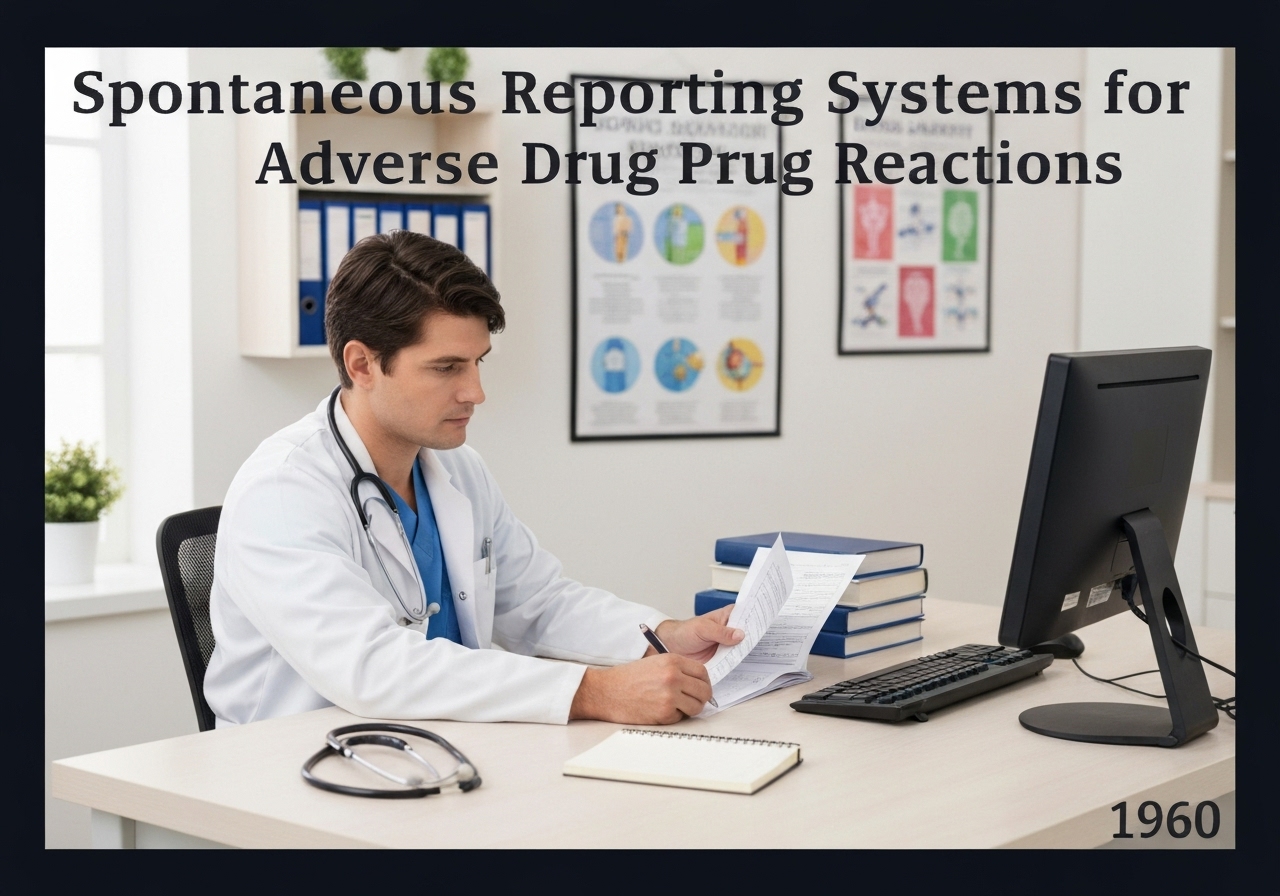自发报告系统 (SRS) 是上市后药品安全监测的基石。医疗保健专业人员和患者自愿向中央数据库提交疑似药品不良反应 (ADR) 报告。尽管存在漏报和偏见等问题,但这些系统对于发现上市前临床试验中可能无法发现的罕见、意外或长期潜伏期的 ADR 至关重要。


(generate image for illustration only)
自发报告系统 (SRS) 是上市后药品安全监测的基石。医疗保健专业人员和患者自愿向中央数据库提交疑似药品不良反应 (ADR) 报告。尽管存在漏报和偏见等问题,但这些系统对于发现上市前临床试验中可能无法发现的罕见、意外或长期潜伏期的 ADR 至关重要。
Spontaneous Reporting Systems (SRS) form the foundation of passive surveillance in pharmacovigilance. The core principle is the unsolicited reporting of suspected adverse 事件 by individuals, primarily healthcare providers but increasingly patients themselves. The UK’s Yellow Card Scheme, launched in 1964, is one of the earliest and most well-known examples. In the United States, the FDA Adverse Event Reporting System (FAERS) serves a similar function.
The primary strength of SRS is its broad scope. It can collect data on all drugs and all patients for an indefinite period, making it an invaluable tool for identifying safety issues that are too rare to be detected in the relatively small and controlled environment of pre-approval clinical trials. These systems are particularly effective at detecting ‘Type B’ (bizarre) adverse reactions, which are not related to the drug’s known pharmacological action.
However, SRS has significant limitations. The most critical is under-reporting; it is estimated that only a small fraction of all ADRs are ever reported. The data quality can be inconsistent, often lacking detailed clinical information. Furthermore, because there is no systematic data collection, it is impossible to calculate the incidence rate of an ADR, as the total number of patients exposed to the drug (the denominator) is unknown. Reports are also subject to various 偏见, such as notoriety of a drug leading to increased reporting (stimulated reporting). Despite these weaknesses, SRS remains an indispensable, cost-effective method for generating safety signals that can then be investigated using more rigorous epidemiological studies.
迎接新挑战
机械工程师、项目、工艺工程师或研发经理
可在短时间内接受新的挑战。
通过 LinkedIn 联系我
塑料金属电子集成、成本设计、GMP、人体工程学、中高容量设备和耗材、精益制造、受监管行业、CE 和 FDA、CAD、Solidworks、精益西格玛黑带、医疗 ISO 13485
药品不良反应自发报告系统
(如果日期不详或不相关,例如 "流体力学",则对其显著出现的时间作了四舍五入的估计)。
相关发明、创新和技术原理
{{标题}}
{%,如果摘录 %}{{ 摘录 | truncatewords:55 }}
{% endif %}